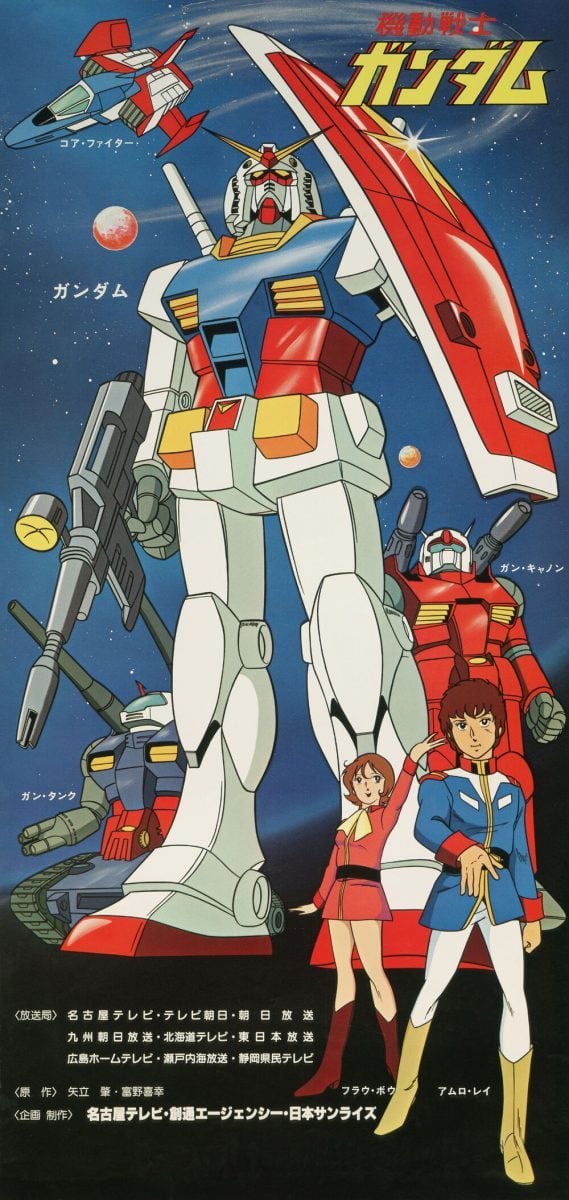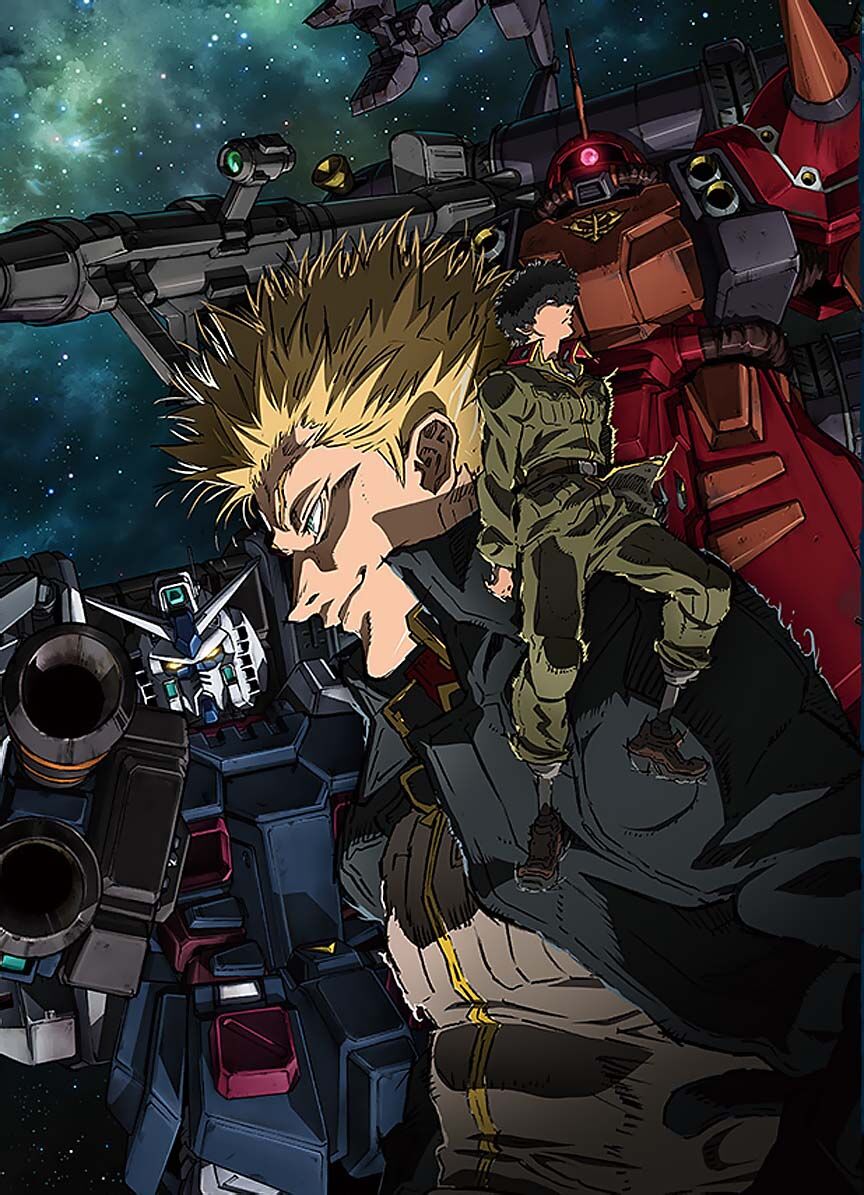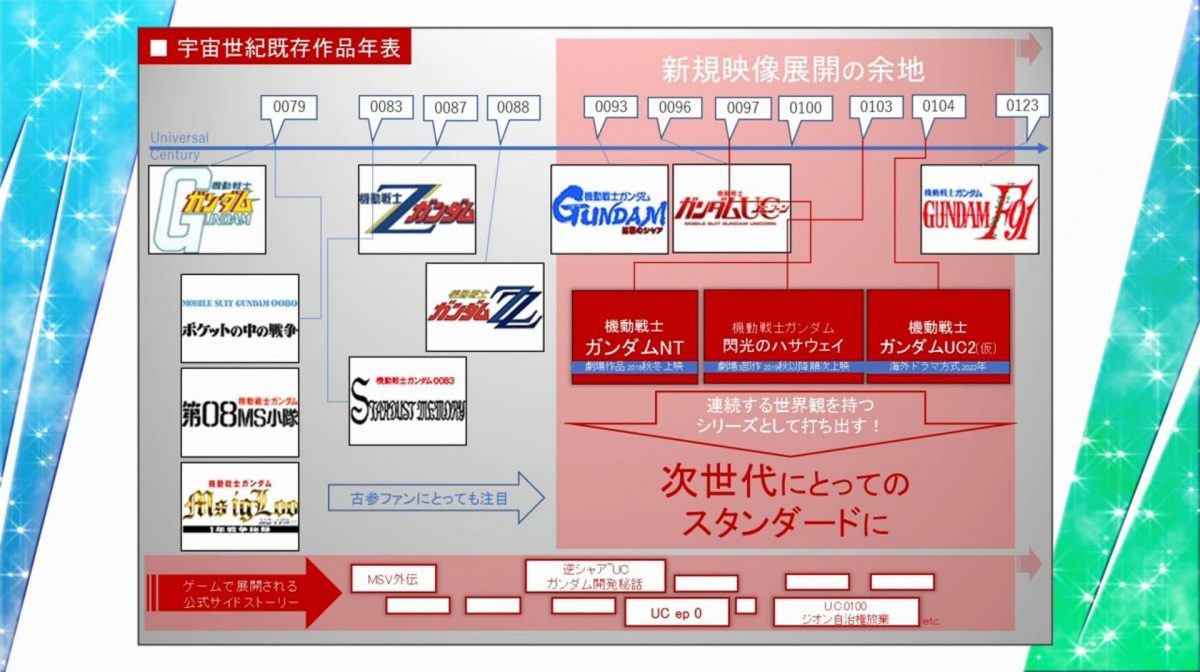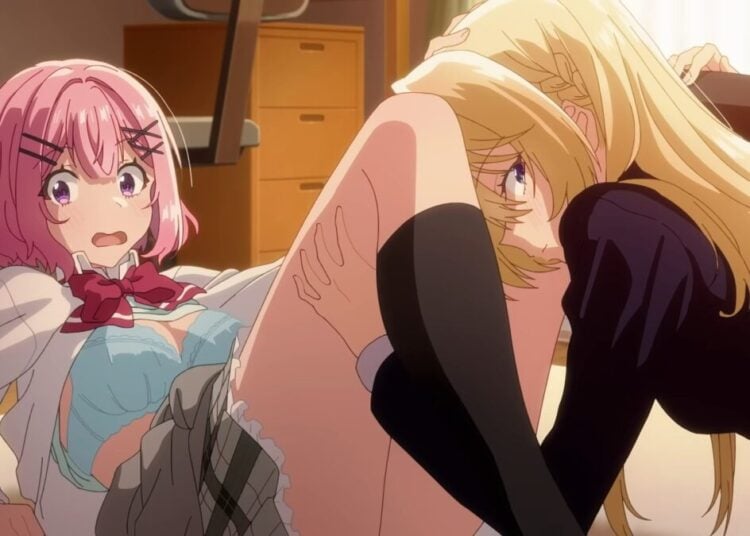For all the spin-off and alternate continuities that have come out of the seminal Gundam franchise, the original “Universal Century” timeline that started it all still holds a place of honor among fans and creators alike. With all the shows, OVAs, and side-stories that have come out over the decades, however, it can seem rather daunting for newcomers. We’re here to help you figure out what’s going on.

To get you started, here’s a quick primer on the major events from UC Gundam, in chronological order. Though this isn’t a thorough dive into the immense lore, much of which can only be found in Japan, hopefully you’ll be able to make more sense of the violent yet tragic backdrop Yoshiyuki Tomino created.
The Laplace Incident (UC 0001; UC 0096)
First introduced in Mobile Suit Gundam Unicorn (2010-14), the “Laplace Incident” is not only the earliest canonical point in the Universal Century, but also rather pivotal in how it foreshadows all that went wrong for humanity in the setting.
Fan re-creation of the full Laplace speech from the Gundam Unicorn novels, highlighting the tragic failure of UC’s promises. Circa 2016. (Source: YouTube)
After much strife and struggle, the nascent Earth Federation has unified the world under one banner, and begun the construction of the O’Neill Cylinders that would comprise the myriad space colonies. From the orbital station Laplace, Prime Minister Ricardo Marcenas prepares to make an historic speech signaling the end of the Anno Domini calendar, and the dawn of a new era for mankind. Midway into this, however, a terrorist attack kills everyone onboard, with the UC Charter meant to be unveiled falling into the hands of a young man known later on as Syam Vist.
Beyond setting the stage for what happens for much of Unicorn, this disaster highlights at once the almost Star Trek-like idealism behind people like Marcenas, and the hypocritical power plays that went on involving mankind’s first giant leap to the stars. What should have been a prayer to a utopian future wound up becoming a curse that would haunt the Universal Century for generations to come.
The One Year War (UC 0079-0080)
The most depicted period in UC Gundam, the One Year War between the Federation and Principality of Zeon is the original nucleus of the saga as envisioned by Tomino. Be it the 1979 series or side stories like 0080: War in the Pocket (1989), it’s from here that people born and raised in the setting start dying en masse.

It’s been over half a century since the “Spacenoids” came into their own, during which time the grip held by the “Earthnoids” over these have grown more oppressive. Exploiting the powder-keg, the Zabi family seize power in Side 3 and launch a war of independence, using Mobile Suits as their trump card against those weighed down by gravity. What ensues is a string of crushing victories, atrocities like Operation British, a protracted invasion of Earth itself, and the hard-fought battles that finally bring the conflict to an end, or so it seems.
Despite the World War II analogies and lasting roughly what it says on the tin in duration, it’s not for nothing that fans and creators keep going back to the One Year War (OYW). Whether it’s the global scope of the carnage, the large-scale battles, the growing use of mecha — culminating in the titular Gundams — or the experiences of those involved in it, there’s a wealth of material to be had. That there’s an emphasis to varying degrees on moral ambiguity, the horrors of combat, and the tragic effects that war has on people, Newtype or otherwise, are also significant in breaking from the simplistic “good vs. evil” premises of the Super Robot shows that preceded the original anime.
The Gryps Conflict and First Neo Zeon War (UC 0087-89)
The events covered in Mobile Suit Zeta Gundam (1985-86) and Mobile Suit Gundam ZZ (1986-87) respectively, the Gryps Conflict and First Neo Zeon War may not be as popular or widely-covered as the OYW. Nonetheless, they’re no less dramatic or interesting than the war these all stem from.
A snippet from Zeta Gundam, showcasing one of UC Gundam’s most memorable villains: Haman Karn. (Source: YouTube)
Even after the billions of lives lost, peace would prove elusive. In an attempt to prevent another nightmarish conflict from happening, an autonomous Federation sub-faction known as the Titans takes it upon itself to stop further Spacenoid rebellions. Their growing oppression, however, spurs the rise of the Anti-Earth Union Group. Once again, humanity is thrust into conflict, with the Zeon remnants of Axis under Haman Karn stepping into the bloodied fray.
This sequence of wars is rather significant in several ways. Beyond introducing the “mid-season upgrade” trope and some of the more popular female cast in UC Gundam, it drives home just how much victory can prove fleeting. Even with Newtype hijinks and ever more powerful weaponry, the cycle of revenge proves far too strong to break, leaving a palpable impact on many characters. Indeed, the tragedy and bloodbath on display play a key role in Char “Red Comet” Aznable’s final descent into madness.
The Second Neo Zeon War (UC 0093)
The focal point of Mobile Suit Gundam: Char’s Counterattack (1988), this conflict is as famous among fans as the film itself. While much shorter and seemingly smaller in scale, its impact still reverberates through later UC works.
https://www.youtube.com/watch?v=9jw0usrqDOs
The final battle between Char and Amuro is seen as one of the most pivotal clashes in mecha anime history. (Source: YouTube)
After vanishing from public view following the events of Zeta, the Red Comet eventually resurfaces to lead a new Neo Zeon movement, with a purported goal of forcing all of mankind into space by any means. Standing in his way is the Federation’s task force Londo Bell, led by OYW vets Bright Noa and Amuro Ray. The Earth Sphere is plunged into war anew, only this time, it’s all the more personal.
This period in the Universal Century in many respects not only marks the culmination of Amuro and Char’s rivalry, but also brings some closure to unresolved threads going back to the OYW. Beyond these, or even the impressive battles seen in the movie, there’s a glimmer of hope shown at the end amidst the darkness of the setting’s nigh-perpetual conflicts: the possibility of human beings breaking the cycle of revenge, eventually.
UC NexT 0100
The UC timeline extends well beyond this point, as seen with Mobile Suit Gundam F91 (1991) and Mobile Suit Victory Gundam (1993-94). Compared to works set around the OYW or Zeta, however, this era is comparatively less well-covered, even among hardcore fans. Until recently, that is.

With the release of Unicorn and Mobile Suit Gundam Narrative (2018), Sunrise has been shifting more into those less charted waters with its UC NexT 0100 Project. As the name suggests, it ambitiously seeks to put more effort into not just bridging the time skips, but also focusing on new frontiers, as opposed to retreading familiar ground.
The latest trailer for Hathaway’s Flash, on top of showcasing its production values, also reflects the mix of old and new seen in Sunrise’s recent UC entries. Circa 2021. (Source: YouTube)
As the adaptation of Mobile Suit Gundam: Hathaway’s Flash (2021) looms over the horizon, hopefully you’ve gotten the gist of what’s lead up to this new chapter in the Gundam franchise.



![Sawaranaide Kotesashi Kun Episode 12 [END] Featured Image](https://blog.jlist.com/wp-content/uploads/2025/12/Sawaranaide-Kotesashi-kun-Episode-12-END-Featured-Image-750x536.jpg)










